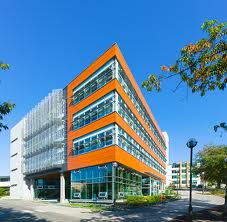Zero Energy Buildings On The Rise in the US - California to New York
 Zero-Energy commercial buildings are cropping up in all U.S. climate zones, from California to New York, according to a report from the New Buildings Institute (NBI) and the Zero Energy Commercial Building Consortium.
Zero-Energy commercial buildings are cropping up in all U.S. climate zones, from California to New York, according to a report from the New Buildings Institute (NBI) and the Zero Energy Commercial Building Consortium.Zero-energy buildings (ZEB’s) are highly efficient structures that produce as much energy as they use through on-site renewable resources.
The report, “Getting To Zero 2012 Status Update: A First Look at the Costs and Features of Zero Energy Commercial Buildings” examines the number, location, costs and design strategies of various types of zero energy commercial buildings (ZEBs) as well as zero energy-capable (ZEC) buildings.
The report is the most comprehensive look at the state of zero energy commercial buildings to date.
ZEBs are still mostly small buildings, but include K-12 schools, offices, university buildings, recreation centers, assembly halls and more.
Among the innovative buildings capturing the attention of architects and builders are the IDeAs Z2 Design Facility in San Jose, CA; Hudson Valley Clean Energy Headquarters in Rhinebeck, New York; and Richardsville Elementary School in Bowling Green, Kentucky.
One of the most innovative zero-energy buildings on the planet is already complete and operational in Vancouver. B.C. The 58,000 square foot Centre for Interactive Research on Sustainability (CIRS) at the University of British Columbia (UBC) opened in November 2011.
The building is a physical manifestation of UBC’s commitment to sustainability. If fact, the building goes further than net-zero. CIRS enriches its environment by making use of resources that would otherwise go unused. CIRS sources energy from the ground and scavenges heat from neighbouring buildings, generates electricity from the sun, obtains ventilation from the wind and harvests its water from the rain. Utilizing new technologies, CIRS also returns energy and water back to its surroundings.
CIRS is also a centre for teaching and learning on sustainability, research and campus operations. It is one of several green buildings on campus. The CIRS building is the starting point of an experiment that UBC hopes will lead to massive strides in advancing sustainability.
“Lofty goals have been set for achieving zero energy buildings by 2030. This (NBI) study is a first look at whether we could possibly reach those goals. The really good news is extremely energy efficient buildings are being demonstrated in a multitude of climates and across building types. This is certainly a good sign for the future of zero energy buildings,” said NBI Executive Director Dave Hewitt.
The report contains recommendations to encourage the development of ZEB’s such as a practical guide for the commercial building community, increased measurement and communication of results on successful designs and better benchmarking to define expectations for performance of highly energy efficient buildings.
You can return to the main Market News page, or press the Back button on your browser.

